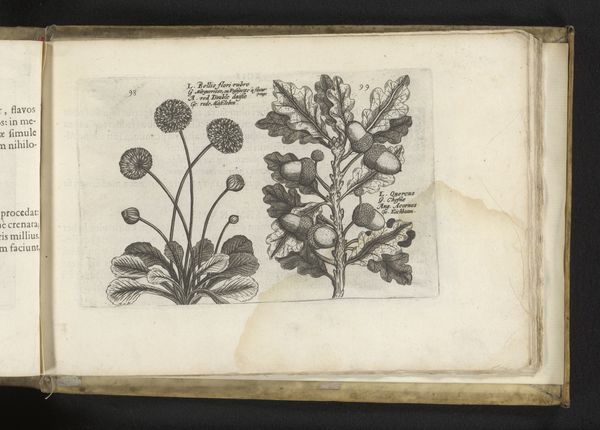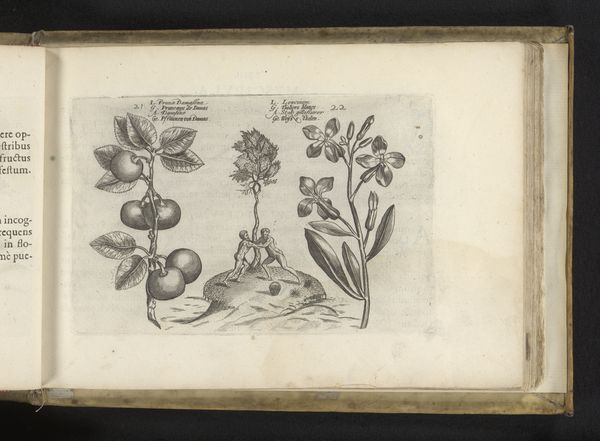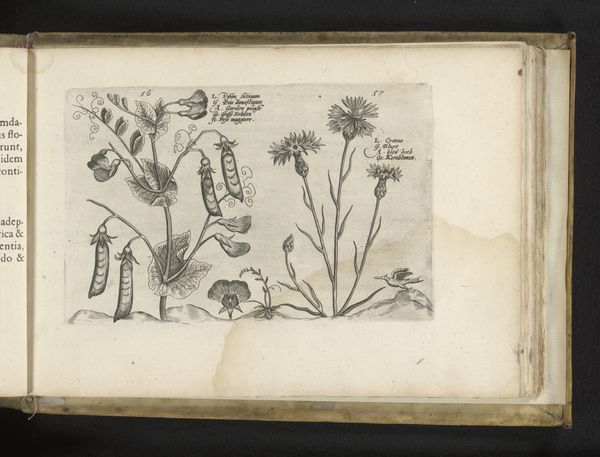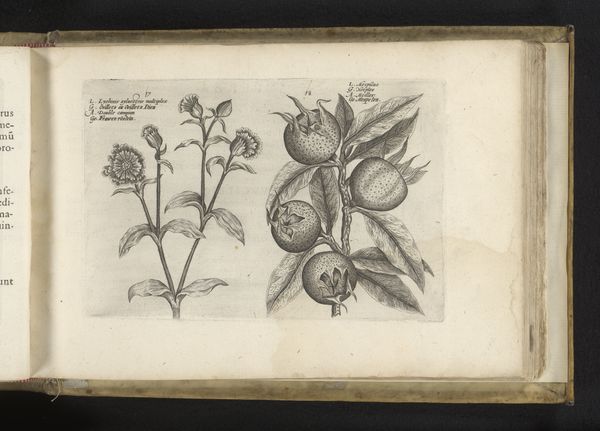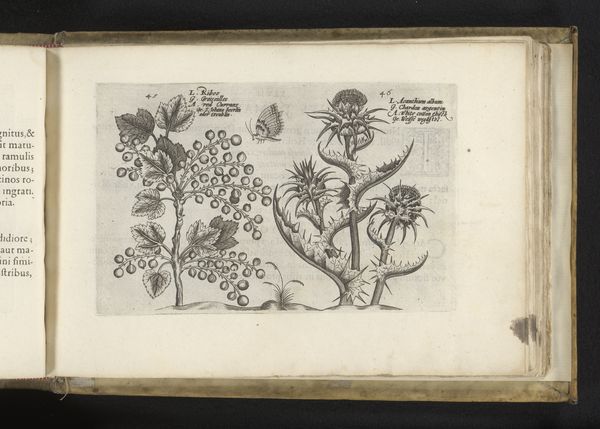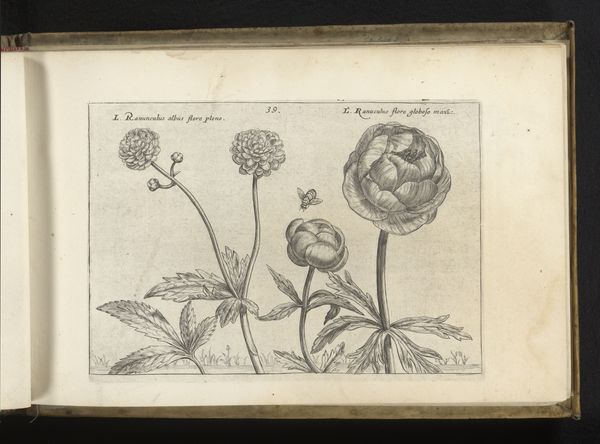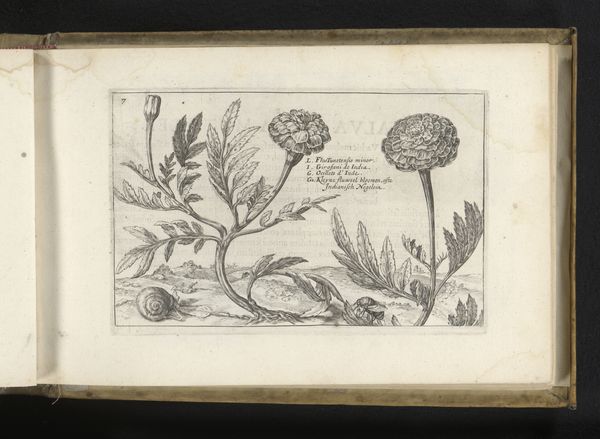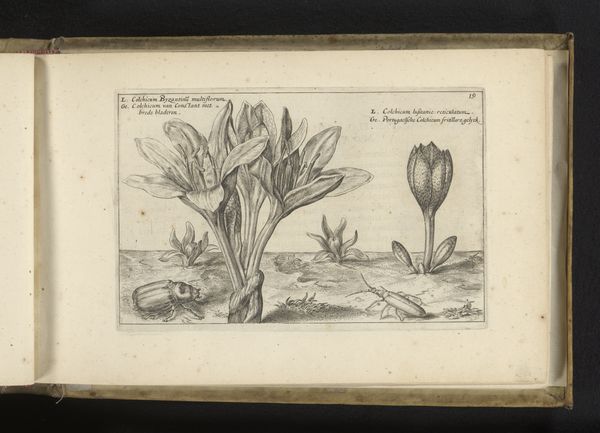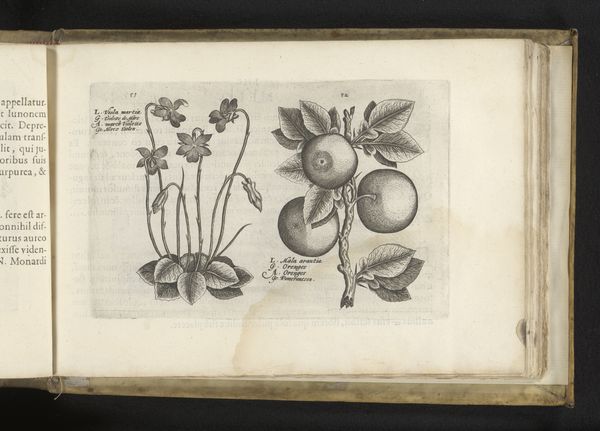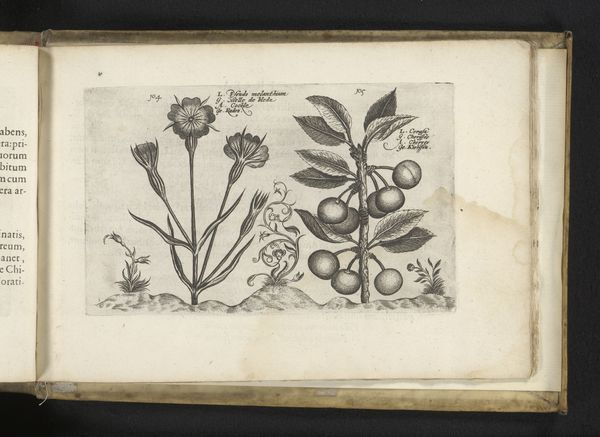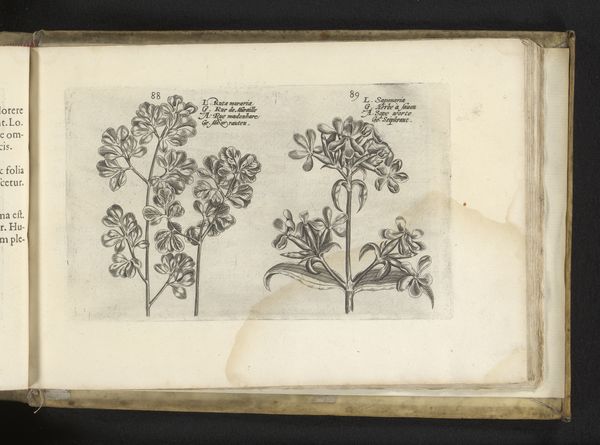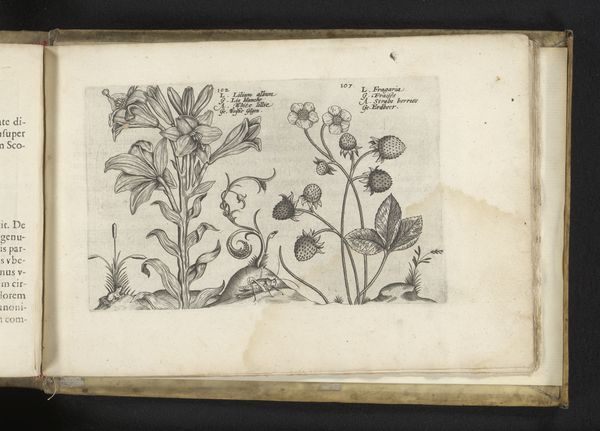
#
aged paper
#
toned paper
#
ink paper printed
#
sketch book
#
flower
#
personal sketchbook
#
pen and pencil
#
pen work
#
sketchbook drawing
#
sketchbook art
#
watercolor
Dimensions: height 132 mm, width 202 mm
Copyright: Rijks Museum: Open Domain
This print, Artisjok en prikneus, was made in the 17th century by Crispijn van de Passe II using engraving. Look closely and you can see how the lines create texture, weight, color, and form, particularly on the artichoke, as well as a squirrel at the top right. Engraving is an intaglio process, meaning the image is incised into a plate, often copper, using a tool called a burin. The plate is inked, and then wiped clean, leaving ink only in the incised lines. High pressure is then used to transfer the image to paper. Engraving demands a high level of skill and precision, often acquired through years of apprenticeship. In van de Passe’s time, printmaking was closely tied to the rise of capitalism. Prints could be reproduced and sold in large numbers, and scientific illustrations like this one were essential for disseminating knowledge. Consider the labor involved in each step, from the engraver’s meticulous work to the printing process itself. This artwork reminds us that even seemingly straightforward images are the product of skilled labor, technical expertise, and broader economic forces.
Comments
No comments
Be the first to comment and join the conversation on the ultimate creative platform.
